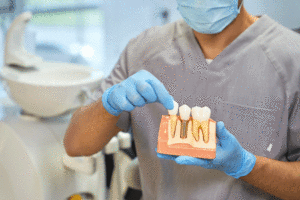Nasal Breathing vs. Mouth Breathing

Breathing is foundational for survival. However in regard to achieving optimal health, does it matter how our air enters our bodies? YES IT DOES. Because we so frequently use our nose for scent, its other vital functions are largely (and unwisely) ignored. Breathing, primarily, through your mouth can lead to or exacerbate many chronic health issues like sleep apnea, snoring, chronic rhinitis and high blood pressure. Outlined below are several, significant reasons why nasal breathing is not only healthier but imperative.
Nasal breathing allows for better oxygen exchange.
Our nose functions as a filter-regulator of sorts by controlling air flow, cleaning contaminants, and even changing the air temperature slightly all to allow for the best oxygen exchange in your lungs. In addition, nasal breathing produces a chemical called Nitric Oxide (NO) in the nasal passages and paranasal sinuses. Among a variety of other physiological and pathophysiological processes in the body, NO increases the size and surface area of the alveoli in the lungs (those tiny sacs where oxygen is absorbed), thereby further improving oxygen exchange.
“Nasal breathing (as opposed to mouth breathing) increases circulation, blood oxygen and carbon dioxide levels, slows the breathing rate and improves overall lung volumes.” (Swift, Campbell, McKown 1988 Oronasal obstruction, lung volumes, and arterial oxygenation. Lancet 1, 73-75).
Nasal breathing helps prevent infections.
The filter part of our nose helps fight and prevent infections. The mucous membrane lining the nasal passages extends all the way from the nostrils down to the lungs themselves. Our Nose houses good bacteria that helps combat bad bacteria. Germs and dangerous bacteria get stuck in the mucous and die, never raching our more vulnerable lungs.
It boosts exercise performance and reduces stress.
As mentioned, nasal breathing slows the air flow coming in and out down, allowing more time for oxygen exchange and allowing it to happen more effectively. Breathing through your nose during exercise also helps prevent exhaustion. In a very simple view, mouth breathing signals our fight or flight instinct: you’ve overworked and stressed your body, it was a special situation and now you must deviate from your normal instinct (at a price) to recover. Your highest level of exertion over a prolonged period should be at a level that can be performed while only breathing through the nose. It is important to not only to breath in through your nose but out as well because we absorb the most oxygen on the exhale.
Making the switch.
Like changing any habit, moving from mouth to nose breathing takes time, effort and consistency. In the occasional absence of those things, taping your mouth shut is effective. Try with your coworkers or spouse to improve your day. For many self-evident reasons (like suffocation), do not use a strong adhesive tape. We recommend 3M Micropore Surgical Paper Tape (Can be found on Amazon) because it is easy to remove and will come off during coughing.
Click the Instructions link below for a printable how to guide on mouth-taping.
Mouth Taping Instructions
Besides taping your mouth shut, which may be impossible for some for various reasons, there are also gradual breathing exercises you can do. Research Buteyko Breathing Method or order the book Close Your Mouth by Patrick McKeown to dive deeper. If you would like to come in and discuss your breathing with our dentist, please call 303-839-5109 or email stammdental04@gmail.com to schedule.



